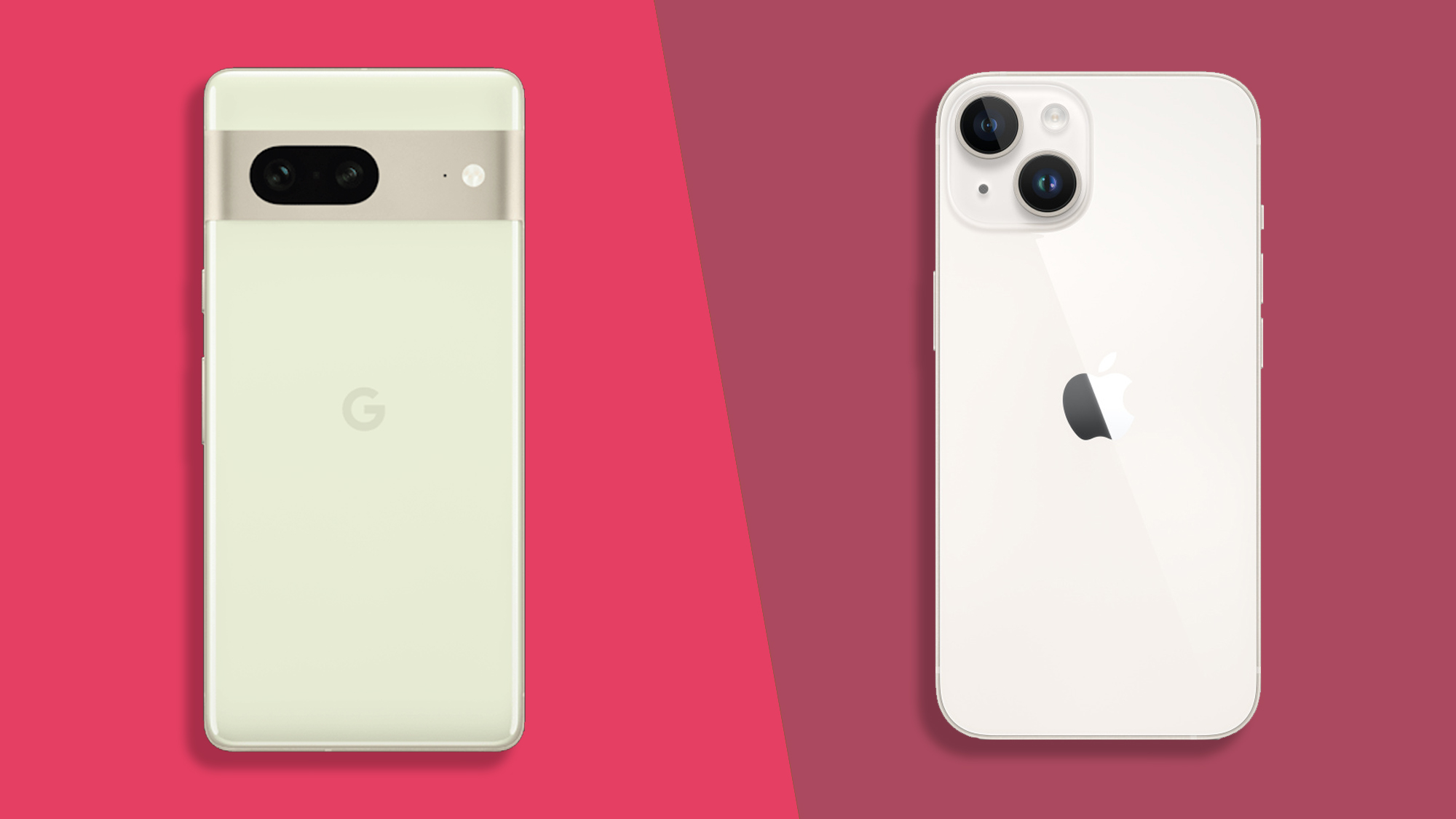
Both the Pixel 7 and iPhone 14 can be counted as mainstream representatives of their respective platforms: Android and iOS. That core difference aside, how do they stack up?
There’s definitely room for Google to steal a march on Apple here, with consumers seemingly cottoning on to the fact that the iPhone 14 is one of the most marginal upgrades in years.
If the Pixel 7 can improve upon the Pixel 6 in a more meaningful way, then it could make inroads into Apple’s formidable market position. So how does the Pixel 7 shape up to the iPhone 14?
Pixel 7 vs iPhone 14 price and availability
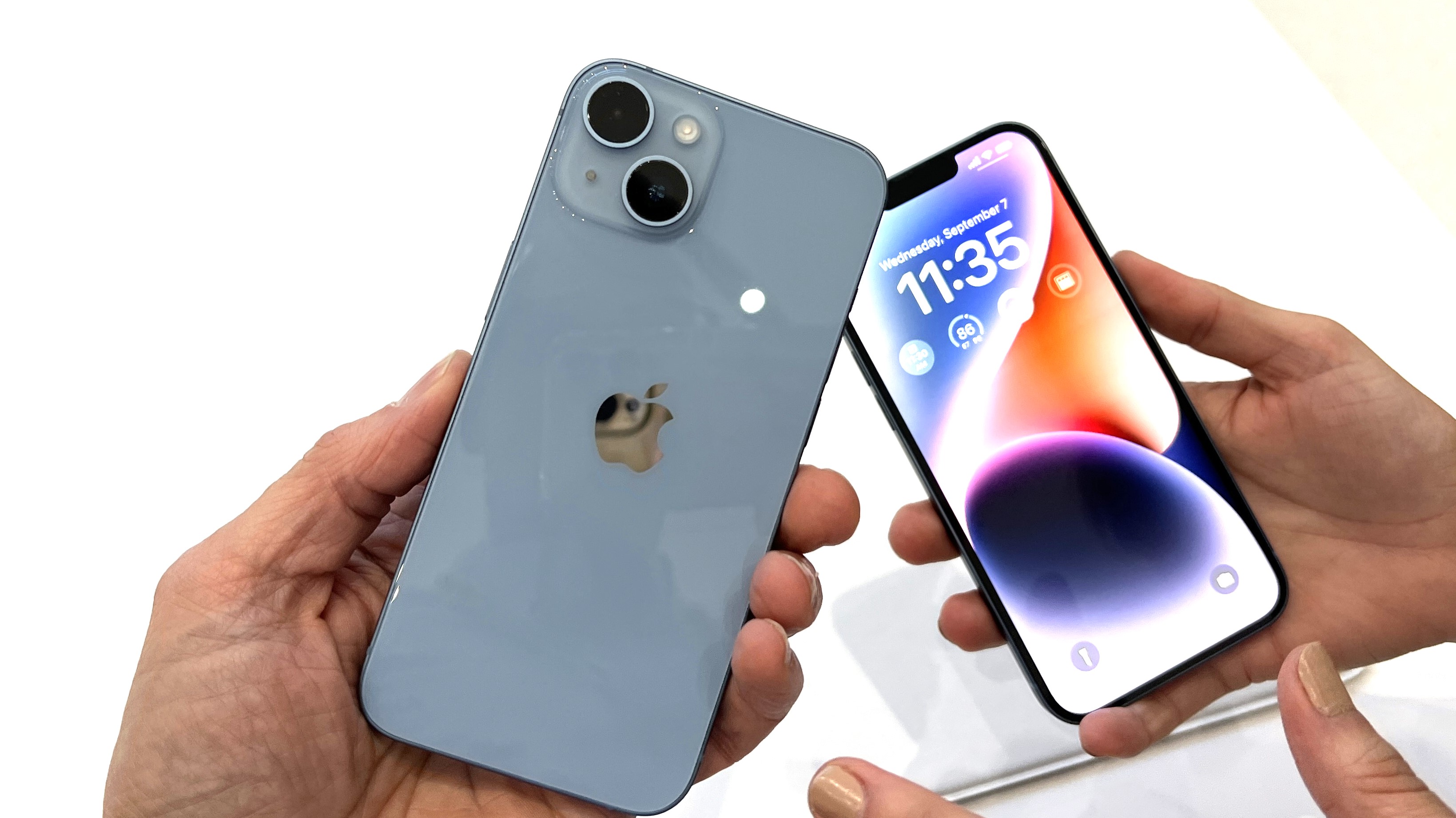
The Google Pixel 7 was made available for pre-order on October 6, with availability as of October 13. Prices start from $599 / £599 / AU$999 for the 128GB storage model, while the 256GB model costs $699 / £699 / AU$1,129.
The iPhone 14 hit shops on September 16, 2022. It’s priced from $799 / £849 / AU$1,399 for the 128GB model, while $899 / £959 / AU$1,579 gets you 256GB, and $1,099 / £1,179 / AU$1,899 gets you 512GB.
That’s a win for the Pixel 7, in terms of pricing, with both storage variants coming in a healthy $200 cheaper than the iPhone 14. The difference is even starker in the UK, where the 14 has received a nasty price bump.
Pixel 7 vs iPhone 14 design
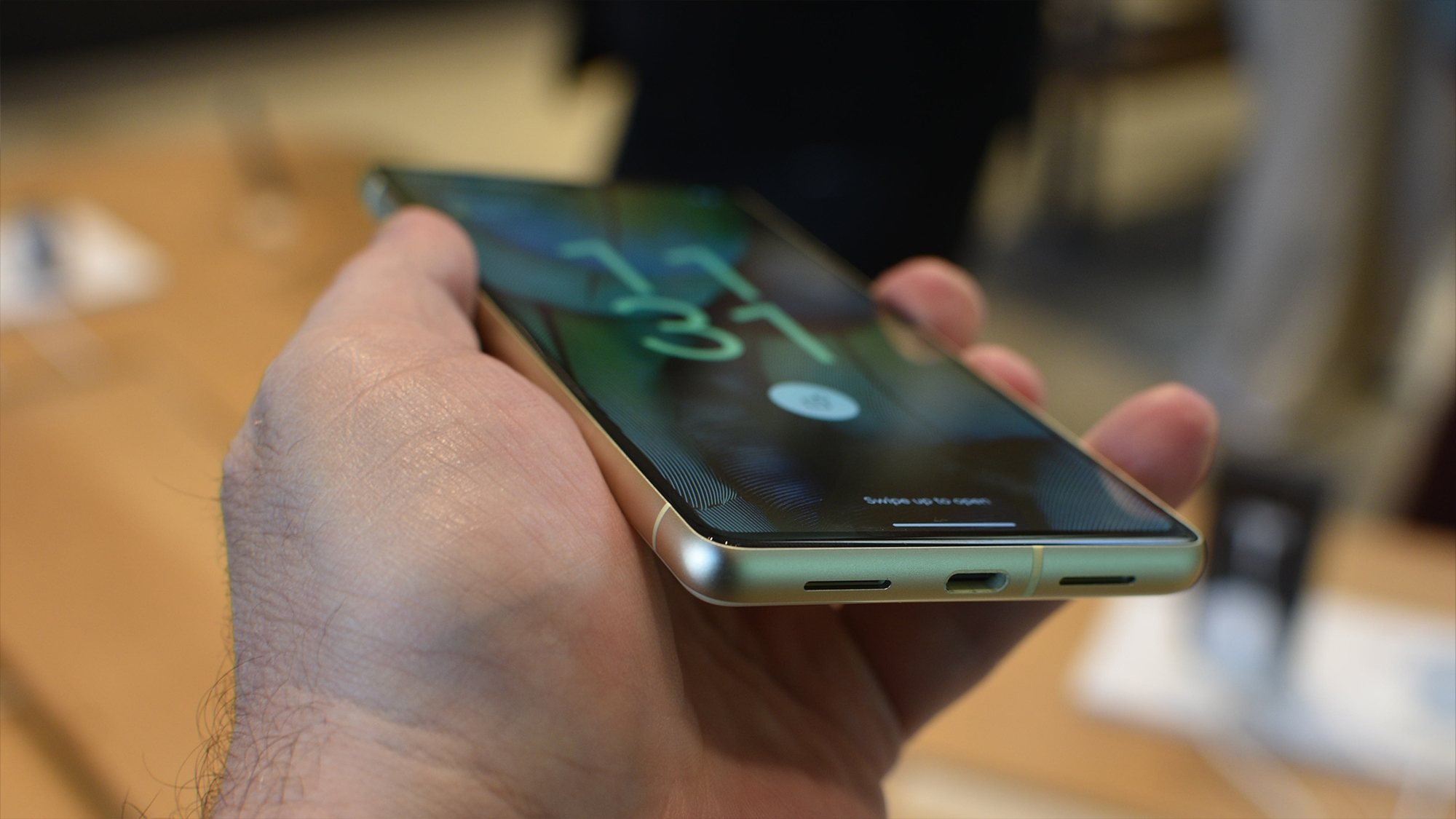
Both of these phones carry strong echoes of their immediate predecessors, but the Pixel 7 does much more to distinguish itself from the Pixel 6 than the iPhone 14 does from the iPhone 13.
Google’s phone has the same basic shape and size as before, with a similar width-spanning camera visor. It’s still a design that sets it apart from any other brand.
This time around, that camera visor is all-metal, and it melts out of the aluminum frame of the phone. The back of the phone is glossy glass.
The company has ditched the two-tone finish of the Pixel 6, which will upset some and please others. We’re digging the new Lemongrass color, which accompanies the more traditional Snow (white) and Obsidian Black too.
The iPhone 14 also has a new color to show off, but it’s a more restrained pale blue. This takes its place alongside Midnight, Purple, Starlight, and Red (with an additional color likely to appear in Q2 next year), giving you a lot more choice, as far as finish is concerned.
In terms of the shape and size of the iPhone 14, it’s nigh-on identical to the iPhone 13 and iPhone 12, with those now-familiar flat surfaces and rounded corners. Comparatively speaking, the iPhone 14 is a fair bit smaller, slimmer, and lighter than the Pixel 7, which might play into your thinking when deciding which phone to buy.
The Pixel 7 and the iPhone 14 both have IP68 certification, so there’s no bragging rights to be had on the dust or water resistance front.
Pixel 7 vs iPhone 14 display
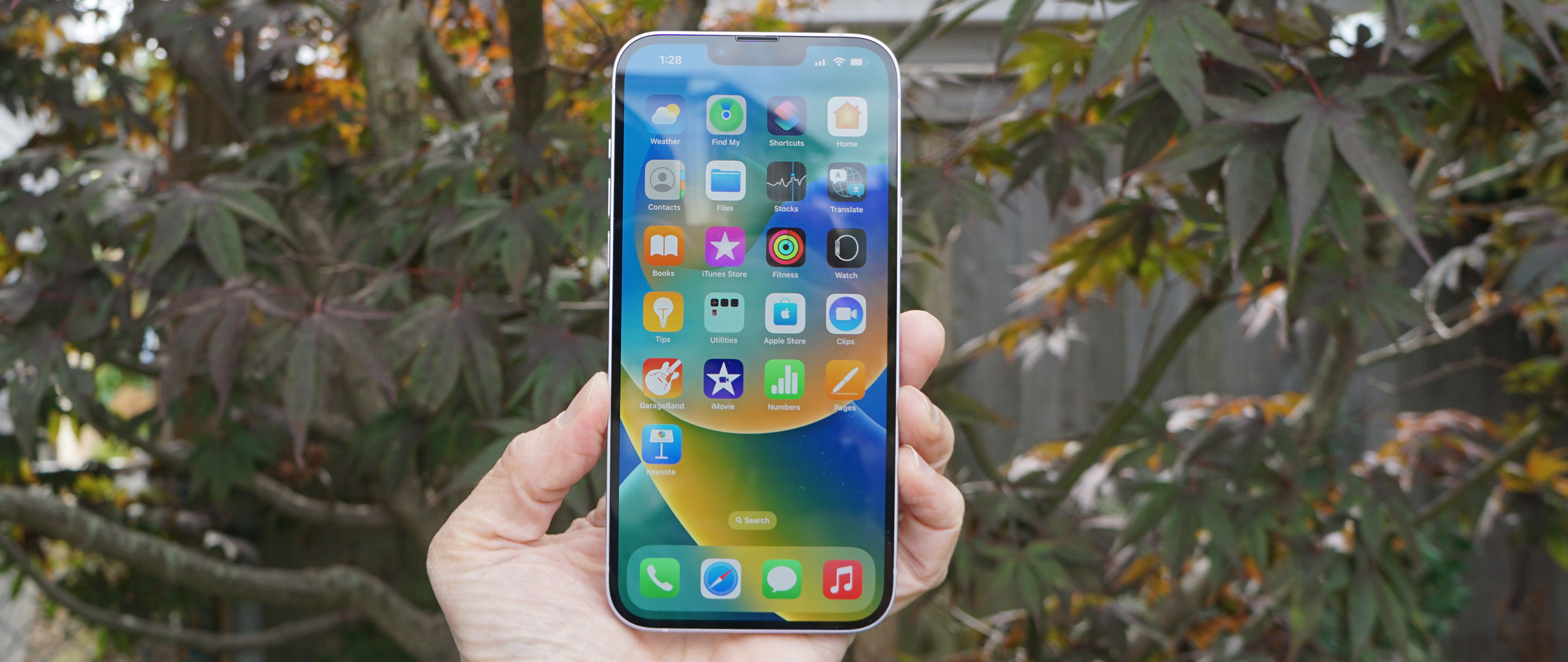
One of the reasons the Pixel 7 is bigger than the iPhone 14 is that it has a bigger display. Its 6.3-inch panel doesn’t exactly dwarf the iPhone’s 6.1-inch equivalent, but there’s certainly more space to play with. That’s especially true with the Pixel 7’s punch-hole taking up much less space than the iPhone 14’s hefty notch.
Both are vibrant OLED panels, but the iPhone 14’s display is sharper at 1170 x 2532 compared to the Pixel 7’s 1080 x 2400 resolution. A better way to compare them, given the size difference, is to consider pixel density: 460ppi for the iPhone and 416ppi for the Pixel.
Google strikes back with a 50% faster refresh rate. At 90Hz, the Pixel 7 isn’t as fluid as the Pixel 7 Pro (nor many similarly priced Android rivals), but it is at least significantly snappier than the iPhone 14’s 60Hz screen.
A 25% brightness boost from the Pixel 6 ensures that the Pixel 7 screen gets brighter than the iPhone 14. Google’s phone hits 1000nits in general use and 1400nits at its peak, while Apple’s phone hits 800nits and 1200nits peak. We’re not talking night and day here, but the difference is clear.
Pixel 7 vs iPhone 14 camera
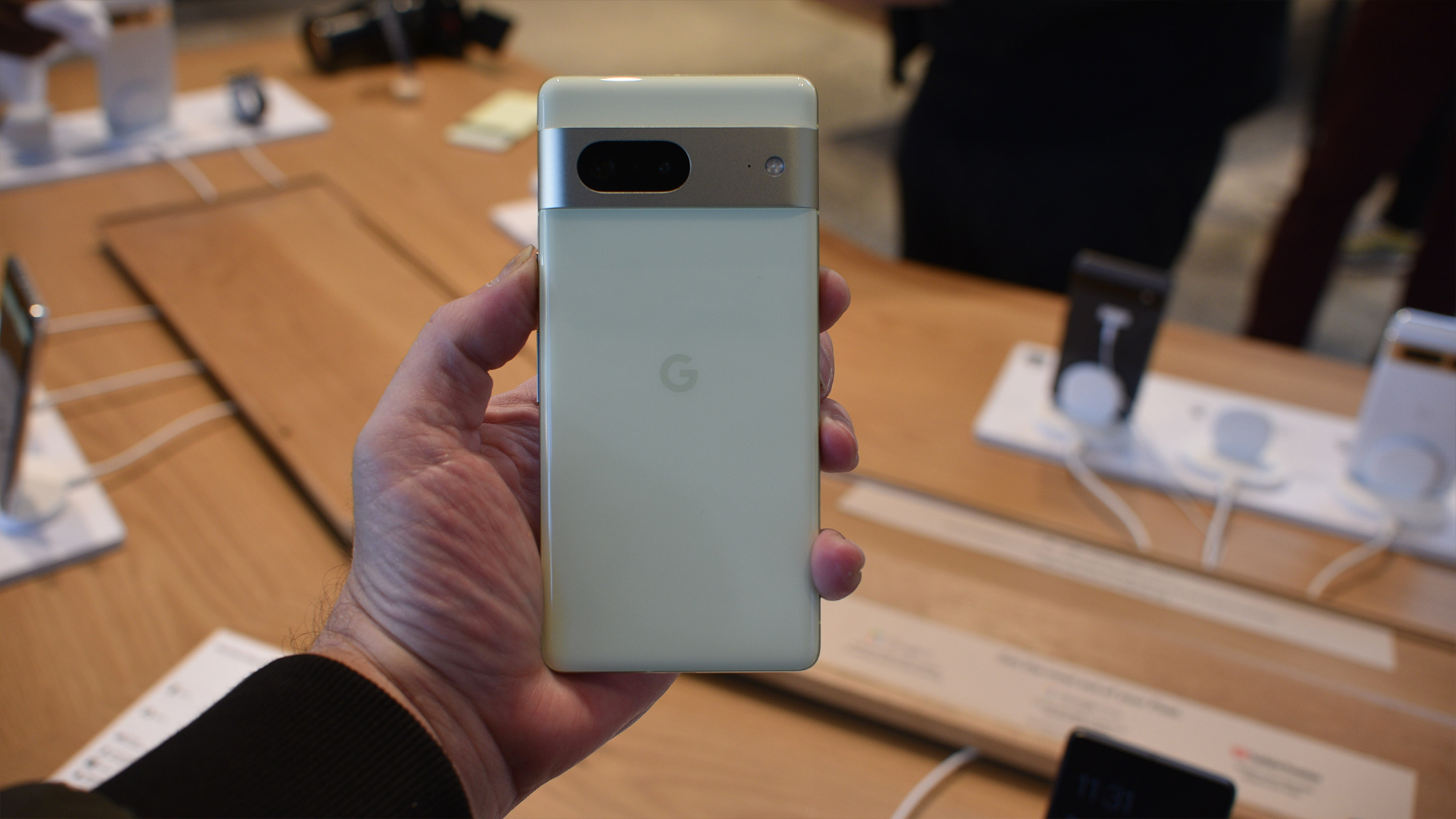
Both these phones have potent dual-camera setups on the rear, with one wide camera and one ultra-wide. Neither has a telephoto.
The Pixel 7 has 50MP wide and 12MP ultra-wide, while the iPhone 14 goes with dual 12MP sensors. Google’s main sensor is larger than Apple’s (1/1.31“ vs 1/1.7”), but of course, that advantage is tempered by the fact that it packs in more pixels – albeit with pixel binning techniques still outputting 12MP shots (more closely to how the iPhone 14 Pro's new main 48MP camera operates).
Apple’s main camera also sports a wider f/1.5 aperture than the Pixel 7’s f/1.9. All the better for hoovering up that precious light.
The iPhone 14 has the more sophisticated stabilization system of the two as well, with sensor-shift OIS beating out the Pixel 7’s plain OIS.
Google has equipped the Pixel 7 with a new 10.8MP selfie camera which is slightly larger if less pixel-dense than the iPhone 14’s 12MP unit. The Pixel selfie cam doesn’t have the iPhone’s new autofocus, either.
Sticking with that front camera, Google has finally added a secure face unlock system to the Pixel 7, so it’s caught up with the iPhone 14 on that front. It didn’t need an unsightly notch to do it, either.
We can talk about hardware all day, but these two manufacturers are the best at mobile photography because of their image-processing smarts. Google beat Apple to the punch with its uncannily bright low-light capabilities, but Apple has caught up over the years.
Now, it’s largely a case of personal preference regarding which camera system you choose. Google’s color science has a cooler look to it that has more contrast and pops a little more. Apple’s approach is slightly more natural.
Both phones have a few compelling tricks up their sleeves this year. On the Pixel 7, the ability to sharpen out and fix blurry shots looks to be especially impressive, while the iPhone 14 has a new Photonic Engine for improved low-light shots and a new Action Mode for super-steady videos.
Pixel 7 vs iPhone 14 specs and performance
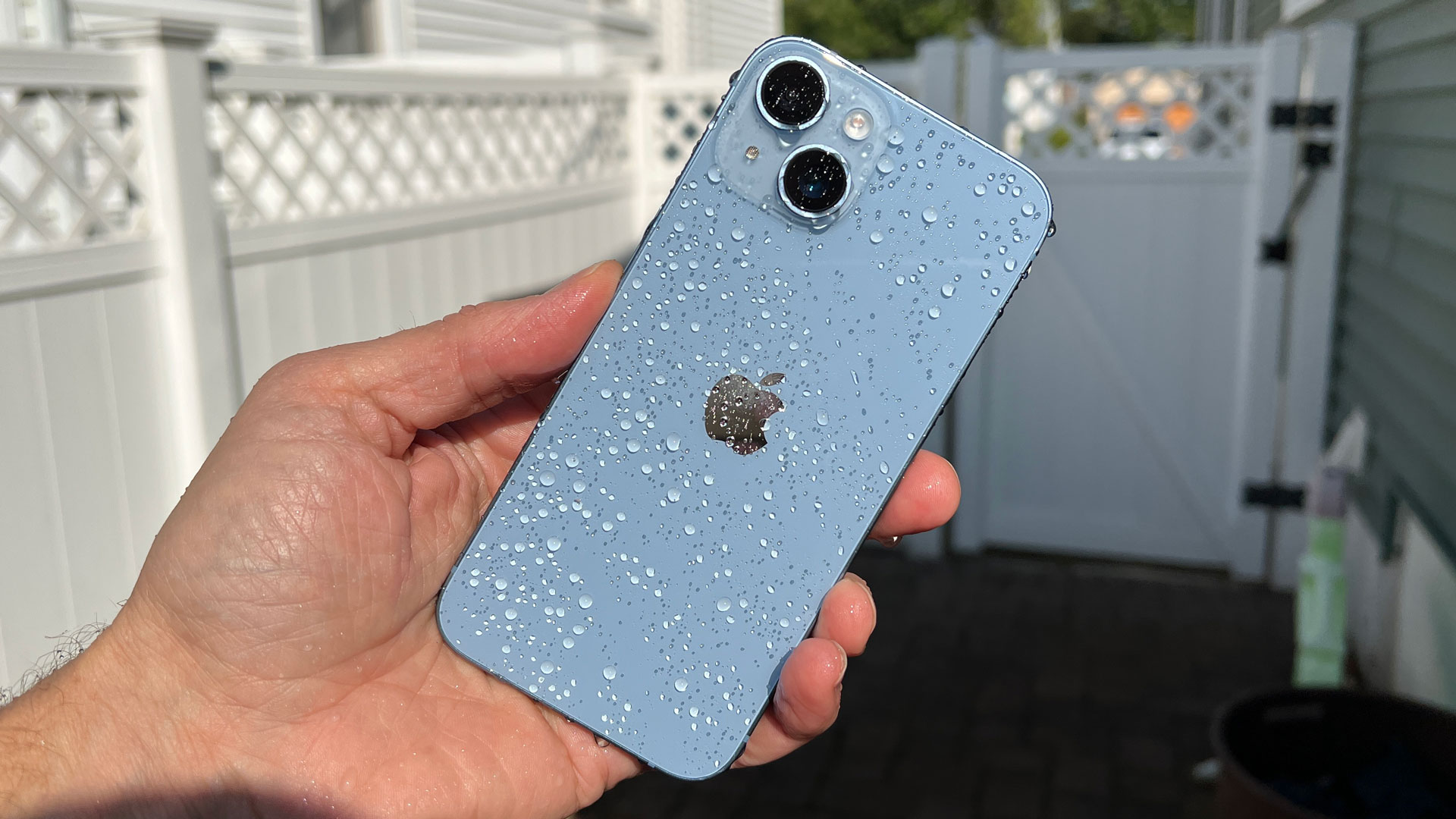
Apple and Google have both adopted custom processors into their smartphones, but Google only made the move with last year’s Pixel 6, so it’s playing catch-up. Apple is an old hand at this custom silicon game, and it’s now at the top of the pile.
The Pixel 7 and its Tensor G2 chip simply can’t get close to the iPhone 14 and its A15 Bionic when it comes to raw CPU and GPU performance. Apple had a formidable lead and even using early benchmarks it was clear the Tensor G2 is only a modest improvement.
Not that we’re massively impressed by the iPhone 14 either. Apple has stuck it with the same processor as the iPhone 13 Pro, meaning only the iPhone 14 Pro gets a true generational bump this year.
Still, there’s no denying that the iPhone 14 remains extremely fast in both general use and highly demanding tasks, like gaming.
Where the Pixel 7’s Tensor G2 does excel is with its machine learning smarts. It enables the phone to do things like nigh-on live speech transcription, as well as clean up noisy voice calls and faster low light shooting, which for some might be more appealing than greater raw horsepower.
As we noted in the pricing section, the iPhone 14 offers an extra 512GB storage option over the 128GB and 256GB options it shares with the Pixel 7 too.
Pixel 7 vs iPhone 14 battery
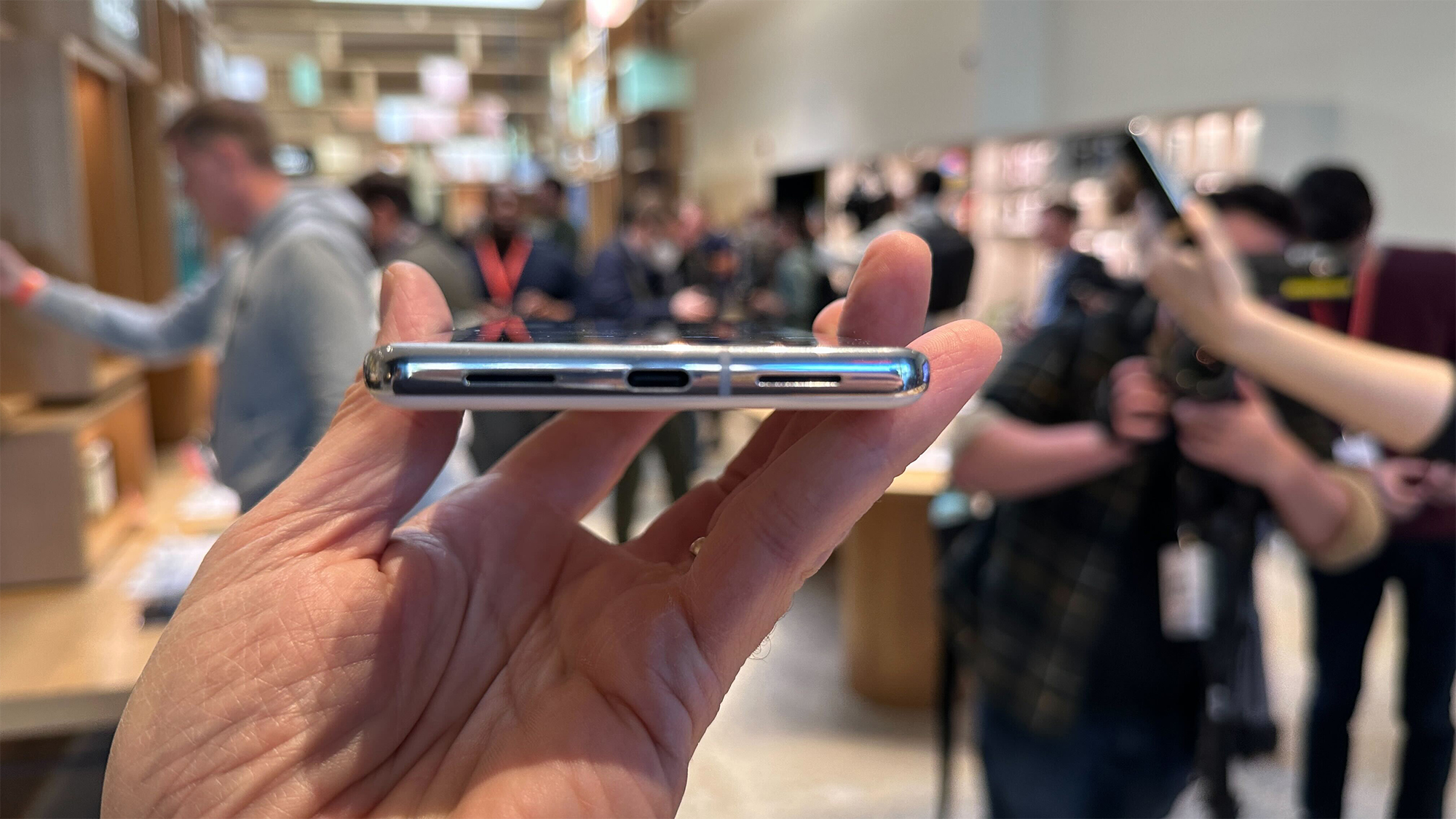
Google has equipped the Pixel 7 with a 4355 mAh battery. That might be way bigger than the iPhone 14’s 3279 mAh, but the more power-hungry nature of the Android OS means we’re a little worried about its stamina.
The Pixel 6, after all, wasn’t exactly spectacular on the battery life front. The iPhone 14, by contrast, routinely gives us more than a full day’s battery life on a single charge.
Google has seemingly helped its cause with that more efficient Tensor G2 chip, which emboldens it to claim that the Pixel 7 can hit 24 hours of battery life. Meanwhile, the company’s new extreme battery saver mode can allegedly allow it to hit a full 72 hours on a single charge.
Both phones support wireless, as well as wired charging. Google’s phone supports up to 30W wired charging, while Apple’s goes up to 20W. Both claim to be able to hit 50% in 30 minutes. Neither manufacturer gives you a charger in the box.
Takeaway
It’s fair to say that we were somewhat unimpressed by Apple’s lack of any meaningful advancements with the iPhone 14. We can also say that the Pixel 7 might just suffer from a similar affliction, albeit maybe to a lesser extent. The jury’s out.
Both phones take a lot from their immediate predecessors in terms of basic design and core technology, all while slightly increasing the power output and tweaking their respective camera systems. It remains to be seen if Google’s tinkering makes more of an impact than Apple’s safe but undeniably effective efforts.
Get daily insight, inspiration and deals in your inbox
Sign up for breaking news, reviews, opinion, top tech deals, and more.